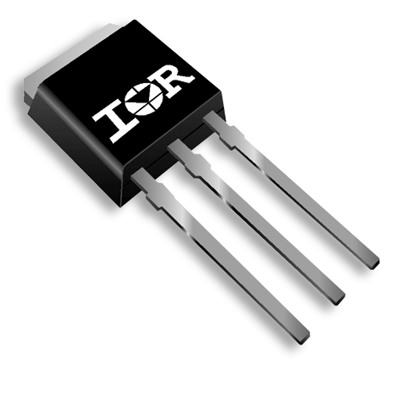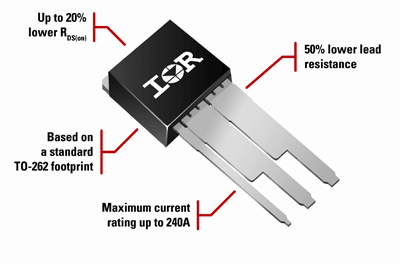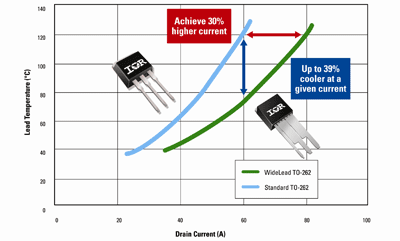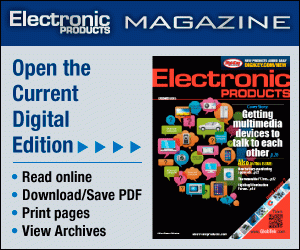Innovative power semiconductor packaging for through-hole applications
The WideLead TO-262 package offers performance improvements for both inside and outside the package improving the system efficiency and reducing the long electrical path bottleneck of the standard TO-262
BY JIFENG QIN, Product Manager, and BENJAMIN JACKSON, Senior Manager
Automotive Product Business Unit
International Rectifier, El Segundo, CA
www.irf.com
Over the last 12 months hybrid (HEVs) and electric vehicles (EVs) seem to have been all the fashion and indeed the car manufacturers who don’t have an HEV in their line-up are certainly a shrinking minority. However a far bigger trend in the automotive market is one that has gone virtually unnoticed the electrification of the traditional internal combustion engine driven car. This trend has been far more significant in terms of the number of vehicles affected and as a result it could be argued has had a far greater effect on the reduction of emissions and improving efficiency. Having said that this is a trend that is not directly marketed by car OEMs but it is all over new cars. Electric power steering, electric fuel and water pumps, class D audio and direct fuel injection are all examples of the electrification of the car and new electric systems that are lighter, more compact and more fuel efficient than the traditional solutions.
One area of rapid growth is Electric Power Steering (EPS), estimates for exactly how much fuel is saved here vary, but a 5% improvement in miles per gallon is frequently cited as the benefit of replacing a hydraulic power steering pump that is in action the whole time the car is running to an electric motor which just draws a current when needed. Size and power are key features for EPS systems and to achieve good cooling manufacturers frequently take the step of mounting the power electronics on a substrate with much better thermal performance than a standard PCB material. However having the power and control boards separate means that a leaded component (like a standard TO-262 packaged MOSFET) needs to be used to form the connection between the two (see Fig. 1 ).

Fig. 1: Typical power and control board assembly using through hole power electronic components.
However one of the main weaknesses in doing such an assembly is the relatively long electrical path and associated resistance of the leads. To combat this International Rectifier recently released a series of automotive grade parts in a new WideLead TO-262 package. Table 1 shows the performance of the two new parts compared with the same MOSFET in a traditional TO-262 package.
As shown in Table 1 , for both IR’s 1324 and 3004 MOSFET families, the maximum RDS(on) value can be reduced by around 20% by introducing the new WideLead TO-262 package. On the other hand, wider lead means more areas to fit the internal wirebonds at MOSFET source terminal, the combined effects of both lower RDS(on) and improved wire bonding inside the package results in an approximately 30% increase of the maximum drain current rating: from 195 A for standard TO-262 package on the market to 240 A for WideLead counterpart.

Table 1: Comparison of performance differences between the standard TO-262 and WideLead packages.
It is important to point out that the Rds(on) on TO-262 packages in specified very close to the package — the RDS(on) does not include any resistance due to the leads, and we already know that the silicon resistance is significantly reduced for WideLead TO-262 package. However, In order to optimize the system performance mentioned on Fig. 1, the associated resistances from the whole electrical path need to be considered: both silicon resistance inside the package and lead resistance. Another important benefit of WideLead is that lead resistance can be reduced significantly as well. Figure 2a shows the outline of the traditional TO-262 package, and Fig. 2b demonstrates the new WideLead To-262:
Let’s take AUIRF1324WL as an example. On the datasheet, the RDS(on) is stated at 1.65 mΩ max. However, in the application the lead resistance becomes significant, the total resistance of the drain and source leads on a traditional TO-262 is typically around 1 mΩ! So assuming the customer uses the full length of the leads in the application the resistance might increase form 1.65 to 2.65 mΩ — a total 60% resistance increase! However, if we switch to WideLead package, 50% lead resistance reduction can be achieved thanks to the wider lead, which means the total resistance could be reduced from 2.65 mΩ to only 2.15 mΩ. As a result, lower condition loss and in turn, better system efficiency is achievable. On the other hand, the body and form factor of the WideLead TO-262 package remains the same as the traditional TO-262, so no major mechanical redesign is needed when switching to the WideLead package.

Fig. 2a: Traditional TO-262 package

Fig. 2b: The new WideLead TO-262
Figure 3 demonstrated the benefits of the WideLead package at a system level; this chart plots the temperature of the leads against DC current for both the standard TO-262 package (AUIRF1324L) and WideLead TO-262 package (AUIRF1324WL), in both cases the silicon inside the package is identical. At 60-A drain current level, the WideLead was 39% cooler than standard TO-262, by having less heat generated, the cooling arrangements can be downsized or perhaps a lower grade of PCB material could be used. Reduced heat dissipation also translates to reduced reliability concerns, which is definitely a key benefit considering the stringent automotive reliability requirement.
We could look at Fig. 3 in a different way: For a given operating temperature up to 30% higher current can be achieved with the same silicon, which means more load capability and higher power density. Either way improved performance can be achieved with possible system cost reduction as the package performance becomes less of a limitation on the semiconductor inside.

Fig. 3: Difference in lead temperature between a standard TO-262 package and the new WideLead TO-262 across a range of currents.
With the performance improvement from both inside and outside the package, the WideLead TO-262 package is a strong candidate for improving the system efficiency to meet the market needs, at the same time it improves the system RDS(on) performance and reduce the long electrical path bottleneck for standard TO-262. With the innovations like the WideLead package, system improvement can be easily achieved from both thermal and cost prospective. ■
Advertisement
Learn more about International Rectifier





